The ADT Pet Theft Report
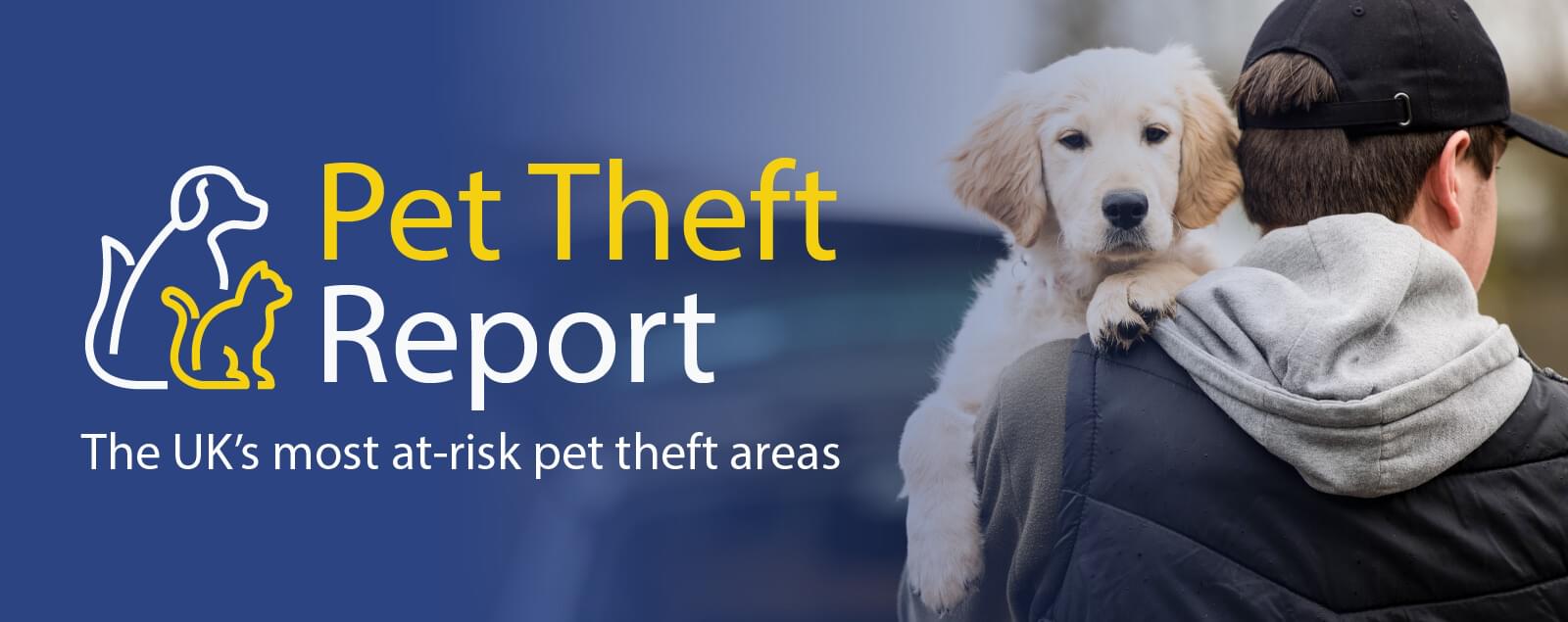
The UK's most at-risk pet theft areas
Britain is a nation of pet lovers, in fact over half of UK households are home to a furry, scaly or feathered friend. Our pets are so important that the government is even considering a law that would put convicted dog thieves behind bars for up to five years to keep our furry friends safe.
The best way to protect your pets is with a home security system, giving you peace of mind, and knowing that your pets are safe and sound.
But where should you be concerned for your furry friends? And which pets are most at risk?
To find out, we requested information from police forces across the country on the number of reported pet thefts over the last five years, and which types of pets are the most commonly stolen too.
The UK's pet theft hotspots
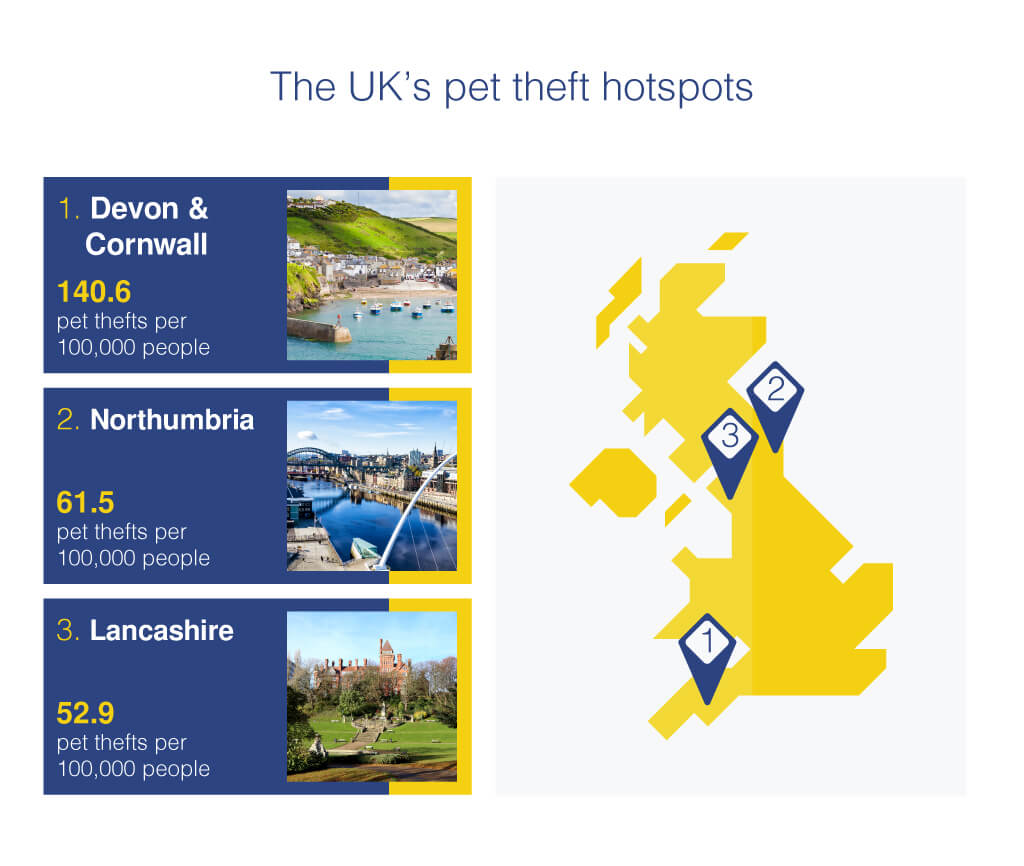
1. Devon and Cornwall 140.6 pet thefts per 100,000 people
Devon and Cornwall have the unfortunate title of the UK’s pet theft hotspot, with the Police jurisdiction recording more than 140 stolen pets per 100,000 people since 2017. Our feathered friends make up the majority of the victims of these crimes, with more than 1500 recorded instances of bird theft since 2017.
2. Northumbria 61.5 pet thefts per 100,000 people
Next up is Northumbria recording slightly more than 62 pet thefts per 100,000 people over the last five years. If you have a canine companion you should be wary in this area as they’re the most likely victims, with 437 recorded dog thefts since 2017.
3. Lancashire 52.9 pet thefts per 100,000 people
Taking third place is this region in the northeast with over 50 pet thefts per 100,000 people since 2017. Much like Northumbria, dogs are the most commonly stolen pets, with an average of 117 stolen each year.
The UK's safest areas for pets
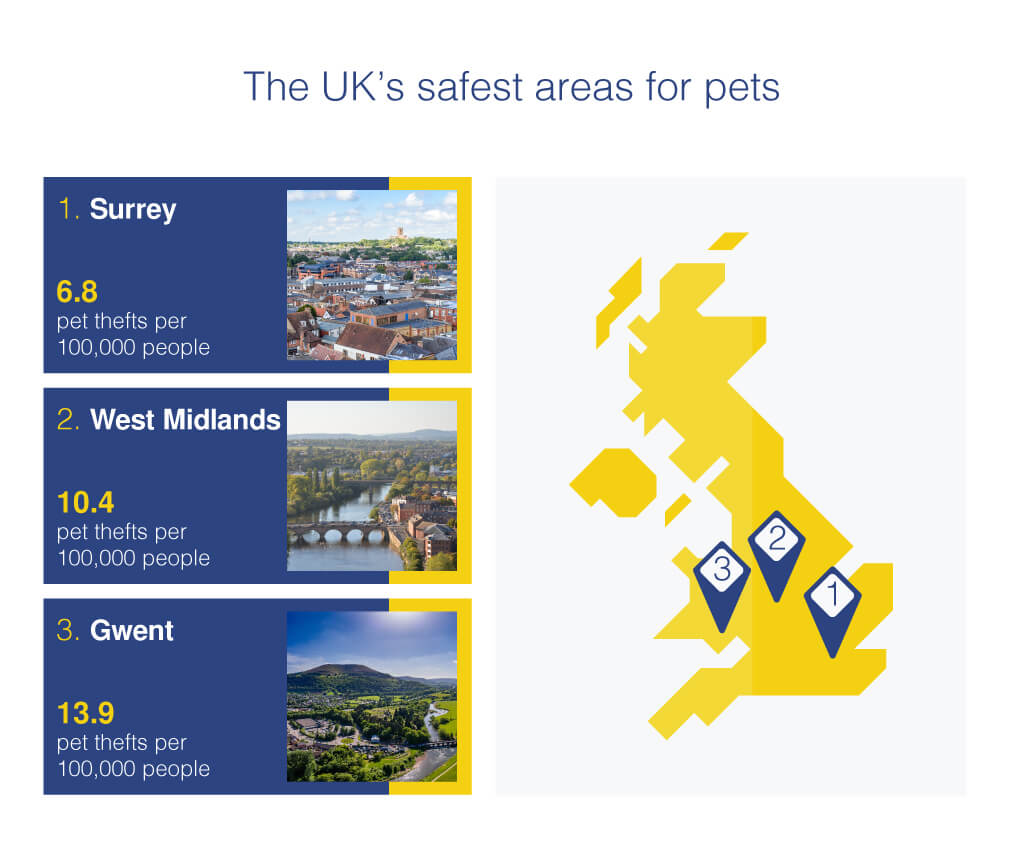
1. Surrey 6.8 pet thefts per 100,000 people
Taking the top spot is Surrey, with just under seven pet thefts per 100,000 people over the last five years. The region has a remarkably low number of pet thefts, going as low as four recorded thefts in 2019, nearly 10 times less than its peak in 2017 of only 38.
2. West Midlands 10.4 pet thefts per 100,000 people
Up next is the West Midlands, with only 10.4 pet thefts per 100,000 people over the last five tears. Like other jurisdictions, dogs are the most commonly stolen pets with Staffies being the most stolen breed, followed closely by Chihuahuas.
3. Gwent 13.9 pet thefts per 100,000 people
Taking third place is Gwent, in South Wales. Unlike many other areas, Gwent Police have not recorded any dog thefts over the last five years making it one of the safest places for our four-legged friends.
The areas with the biggest pet theft increases
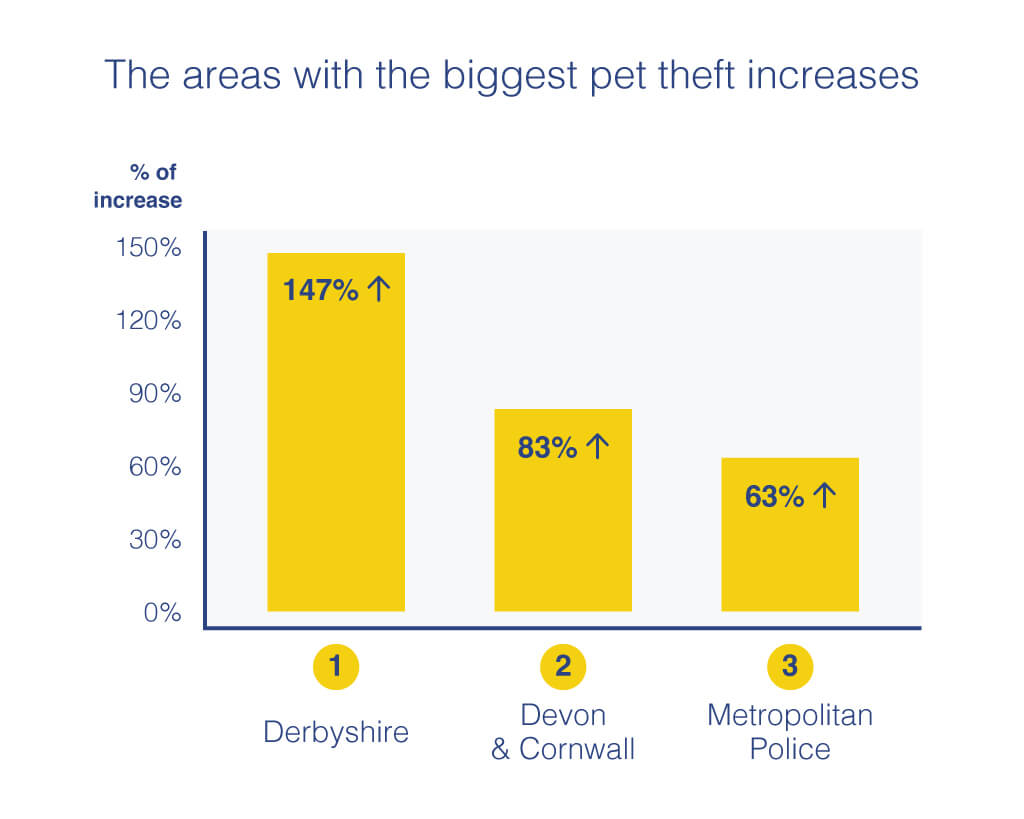
1. Derbyshire 147% increase
Derbyshire has seen the biggest increase in pet thefts between 2017 and 2021, rising by nearly 150% over the last five years. The region experienced its highest proportion in 2021, with owners reporting 7.4 pet thefts per 100,000 people, over double that of five years ago.
2. Devon and Cornwall 83% increase
This southwestern region is up next, with a rise of over 80% since 2017. Thefts in the area spiked in 2018 to almost 290 per 100,000 people before dropping rapidly to just under 11 in 2019 and birds are the most commonly stolen pet in the region, accounting for 86% of animal thefts.
3. Greater London 63% increase
Taking third place is Greater London, with the Police recording a 63% increase over the last five years. The jurisdiction saw a sharp rise between 2020 and 2021, from 6.8 to 11.4 thefts per 100,000 people.
The most commonly stolen pets
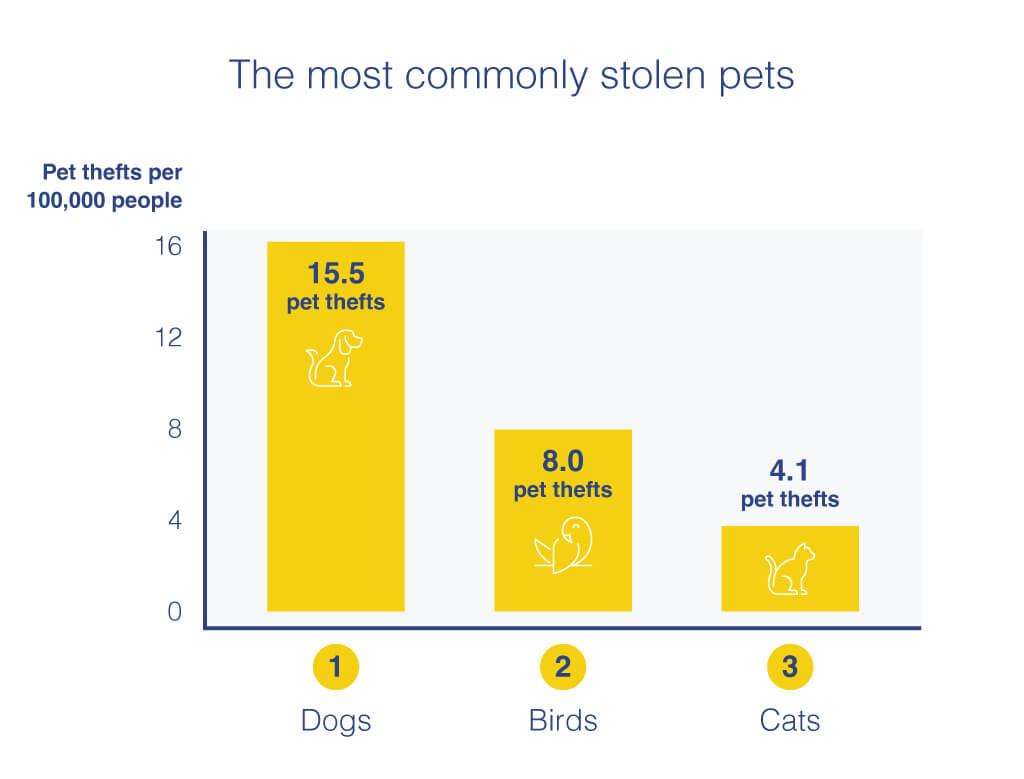
1. Dogs 15.5 pet thefts per 100,000 people
Man’s best friend takes first place, making up 23% of pet thefts since 2017. Dog thefts peaked last year at 1,155 but the number of thefts per 100,000 people has remained relatively consistent, only rising by 4.9% over the last five years.
2. Birds 8 pet thefts per 100,000 people
Up next are birds, with more than 2,500 instances of animals being stolen over the last five years, giving it a total of eight pet thefts per 100,000 people. 2021 was the peak year for stealing our feathered friends with over 1,200 stolen over this period and Devon and Cornwall have the highest rates of bird theft, recording more than 1,500 of these crimes.
3. Cats 4.1 pet thefts per 100,000 people
Taking third place are our feline friends with more than 1,300 instances of cat theft over the last five years. Cat thefts are also on the rise, averaging around an 18% increase year on year since 2017.
The most commonly stolen dog breeds
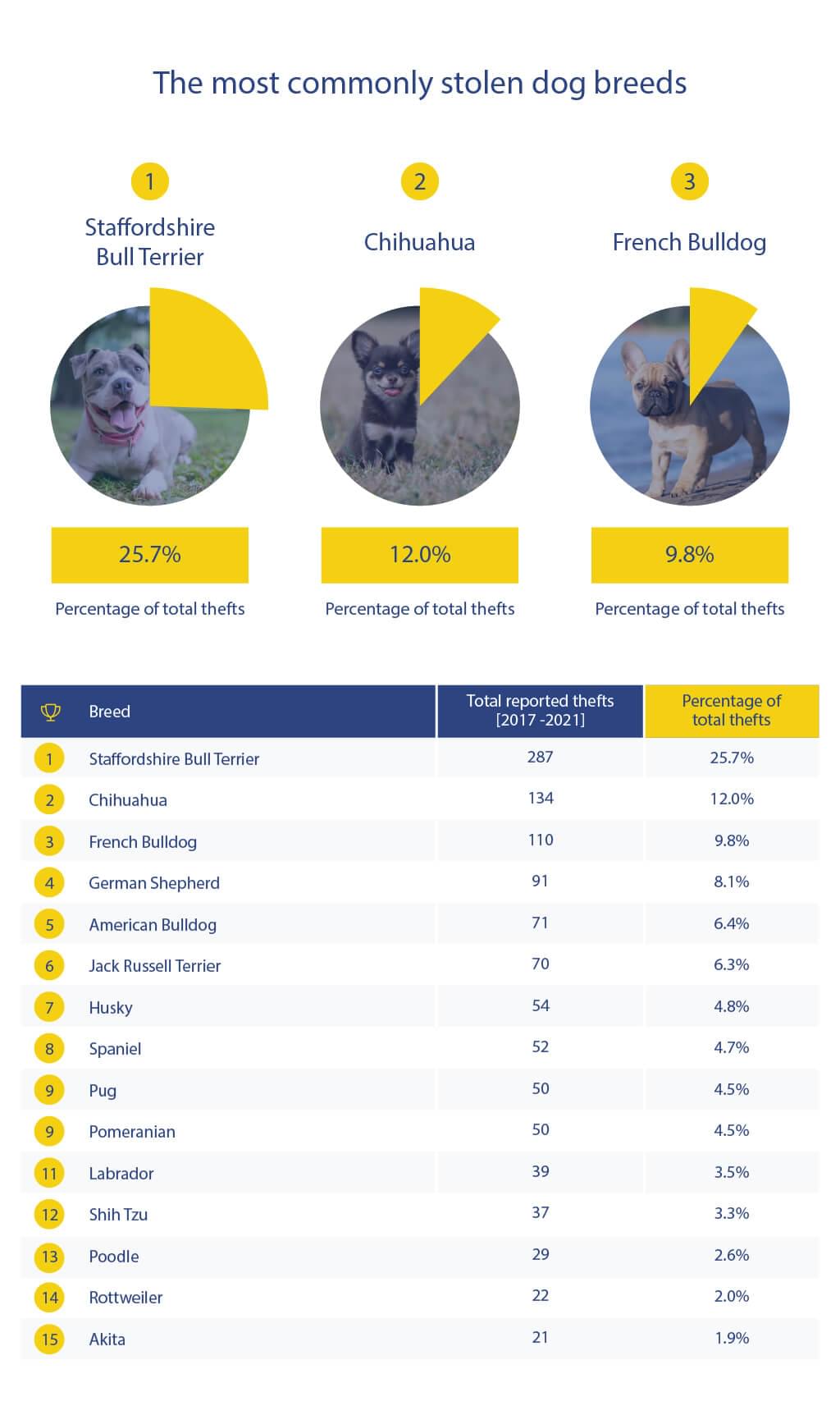
1. Staffordshire Bull Terriers 25.7% of total thefts
It’s no surprise that Staffies take the top spot for the most commonly stolen dog breed as they’re one of the UK’s most popular dogs. They account for just over a quarter of the total dog thefts for the areas we looked at or 5.6 thefts per 100,000 people over the last five years.
2. Chihuahuas 12% of total thefts
Their tiny size not only makes Chihuahuas adorable but also makes them an easy target for dog thieves too. Thanks to high demand and a reasonably high resale value for thieves Chihuahuas take second place, making up 12% of total dog thefts since 2017.
3. French Bulldogs 9.8% of total thefts
Taking third place is another small breed, French Bulldogs. These dogs have soared in popularity over the last five years and with this unfortunately comes a rise in thefts, nearly doubling between 2020 and 2021. Frenchies can be sold for up to £3,0000 making them a highly prized target for thieves.
*Please note that this data reflects the police forces who supplied data on specific dog breeds, so it only provides a snapshot of the total proportion of thefts and the actual proportion could in fact be higher.
How to keep your pets safe
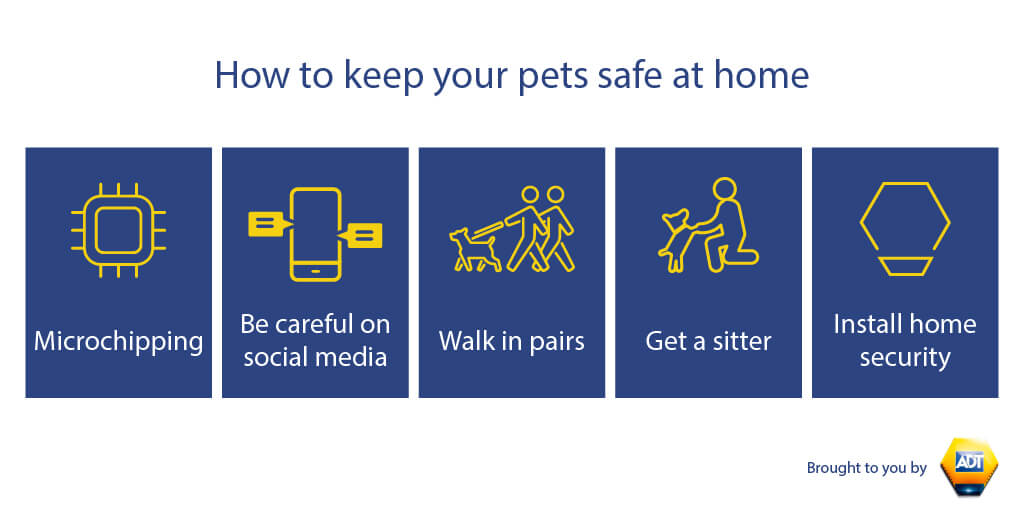
So, now that we've established pet thefts are rising, what can you do to protect your furry friends?
1. Microchipping
Having your pet stolen is something a lot of people can’t bear to think about as victims suffer great emotional distress, so it’s vital that you get your pet microchipped. Not only is it required by law for both dogs and cats, but it can help to easily identify and quickly return your pet to you if they get lost or stolen, giving you peace of mind and keeping them safe both inside and outside the home.
2. Be careful on social media
Social networks are a great way to share the adorable antics of our furry friends. But to avoid the heartache of a stolen pet, be wary of the information you post on social media. Keep your privacy settings in mind and beware of strangers online asking questions about your pet. If you’re visiting a new place make sure to only tag the location when you get home and blur out any identification tags in photos.
3. Walk in pairs
Taking your dog for a walk on your own could make you an easy target for pet thieves especially when it's dark, so consider taking someone with you but remember to stay focused on your pet. Always make sure to walk where it's well-lit and tell others the route you’re taking to protect both you and your pet.
4. Get a sitter
This tip mainly applies to dogs, as they’re social animals who don’t like being alone for long periods of time. If you find that you’re too busy to keep an eye on them and there’s no one else in the house, hire a sitter to give your four-legged friend some company and the presence of someone in the home will deter an opportunistic thief.
5. Install home security
Pet-friendly house alarms can provide you with all the security assurances you need as well as peace of mind knowing that your family and pets are protected. ADT's home security system features pet-friendly PIR sensors allowing you to set your alarm without worrying that your pets will trigger the alarm.
You can also add indoor Wi-Fi cameras to your package that allow you to check in on your pets from your smartphone and they even have two-way audio so you can reassure them no matter how far away you are.
Methodology
All data was retrieved from Freedom Of Information requests to each UK police force. Unfortunately only 19 were able to provide us with the relevant data.
Population figures for each police jurisdiction were taken from the ONS.
Note: some of the police forces we contacted do not record the number of pets stolen, only that an animal theft occurred, which also includes livestock as well as pets. In this case, the data reflects the minimum number of animals stolen.
The most commonly stolen dog breeds were taken from the four police forces who supplied data on pet thefts broken down by breed.



